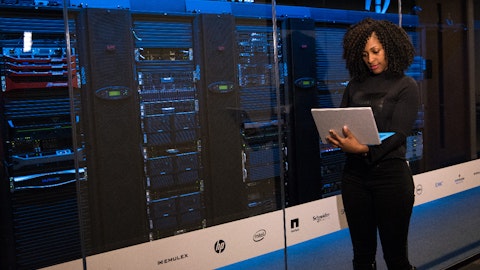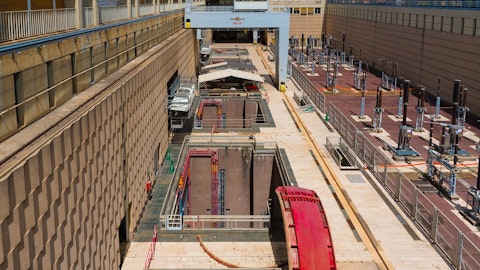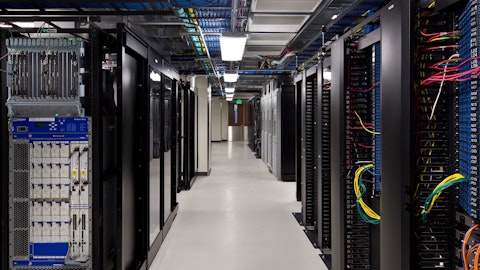Giordano Albertazzi: I would say that we have done a very, very good job operationally in terms of positioning ourselves in the market with our technology and with our total cost of ownership story. So we are strongly positioned in EMEA altogether.
Operator: Thank you. Our next question comes from Steve Tusa from JP Morgan. Steve, please go ahead.
Steve Tusa: Hi, congrats on the free cash flow.
Giordano Albertazzi: Thank you.
David Fallon: Thank you, Steve.
Steve Tusa: Why – just pick one, then I have a follow-up. But why do you guys have the inflation, the material, freight and labor inflation ticking up quarter-to-quarter from 2Q to 3Q? Is that something to do with the comp from last year or something?
Dave Cote: Yes. So there’s three components to the inflation story. You have the material inflation, which is a $110 million headwind for the full year. Yes, you have actually a benefit in freight of about $40 million and labor is about $100 million. The benefit from freight is definitely front-end loaded. So of that $40 million, probably $30 million of it is in the first half, which provides an actual tailwind as you look at the second half versus the first half. In addition, we do see an uptick in labor inflation, partly because of the timing of pay raises, but also related to a foreign exchange dynamic in Mexico where we have some of our labor. So I would say those are probably the two most significant dynamics. It’s pretty much just front half, back half dynamics in both freight and then also labor.
Steve Tusa: And then can you just help reconcile it? It just seems like the other guys, the other peers you compete against their orders are trending better than you guys on a year-over-year basis? I know there’s some difference in portfolio, there’s some lumpiness. Do you guys feel like you’re being selective? Or you’re kind of holding your own in these bids for now?
Giordano Albertazzi: So there are two elements here. One is the normalization that we’ve been vocal about in the last two calls and this will continue. So that’s a very normal, very healthy situation we’re in. We certainly have very strong comparisons. This is certainly true. And we see pipelines growing. So – I am positive about the trajectory we’re on. I can’t speak for other players.
Dave Cote: Base period of comparison.
Giordano Albertazzi: There is an element, exactly. Exactly. So if we go back to the beginning of the year, we were saying, Hey, we are at $4.8 billion backlog, and we are likely going to shrink that, and we’re going to probably consume this backlog. So here we are halfway through the year, that has not been the case. So we positively surprised by that. We have a book-to-bill one. But and if we look at our book-to-bill on the 12 trailing months, then we are at 1.1. So there are multiple ways to look at this. And I recommend we don’t just take things to their face value, but we double-click on what’s really behind.
Steve Tusa: Yes, great. And then just one last one. On this new technology around cooling and just the proliferation of these AI related data centers. Do you feel like you’re going to need to at some point go and do invest more, whether it’s through acquisitions or through technology at some stage to kind of bring more in-house? Or it’s more steady as she goes as far as partnerships and developing internally? Is there a certain – is there some sort of acquisition that you feel like you’ll end up doing when you get better visibility on what the format is?
Giordano Albertazzi: This technology is still at a very early stage. And as every technology at an early stage – you’re looking at the opportunities through multiple lenses. One is the organic lenses, and we’re certainly investing a lot, but we have partnerships as well. So there are multiple opportunities out there. We’ll really see and the – with a stronger balance sheet as well – will be focused on understanding exactly what’s the best path going forward as the market matures.




